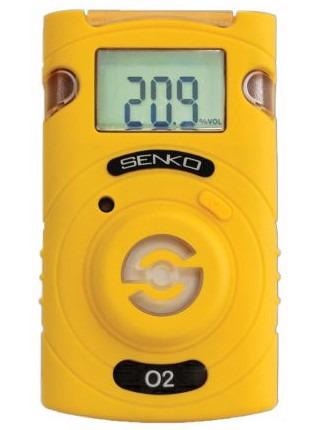Oxygen (O2) depletion monitors are devices designed to measure ambient concentrations of atmospheric oxygen, alerting users when nearby Ievels have fallen. These alerts allow appropriate action to be taken prior to an evacuation being required due to potentially dangerous oxygen levels.
Problems also arise when oxygen levels are too high. Oxygen ‘enrichment’ (levels over 23%) is potentially dangerous, leading to increased chances of combustion and the intensity of fires. Oxygen detectors are able to signal any potentially dangerous levels of oxygen, making them essential instruments in a wide range of applications.
Understanding Oxygen Enrichment and Depletion
Oxygen is present in the atmosphere at approximately 20.9% at sea level, though substantial fluctuations exist on either side of this percentage, therefore resulting in the potential to cause disaster. Discussing percentages of oxygen without considering atmospheric pressure can be misleading, however.
For example, at the top of a mountain where atmospheric pressure is low, oxygen levels will be lower than at sea level, where atmospheric pressure is comparatively higher. In either case, the percentage of oxygen will be identical. Oxygen levels are frequently discussed in terms of partial pressures because of these factors.

Image Credit: International Gas Detectors Ltd
Introducing O2 Depletion Monitors
O2 depletion monitors should be used in areas where risk assessments determine that oxygen levels may fall to any point below 19.5% Vol. This includes areas where inert or other asphyxiating gases may be present, in confined spaces, or in areas where substantial amounts of carbon dioxide (CO2) are in use.
It should be noted, however, that in instances where CO2 is suspected of displacing oxygen, CO2 toxicity becomes a much more serious concern and a CO2 monitor should be fitted.
O2 depletion monitors remain a common safety measure in research and teaching laboratories, however, as well as in industries like food, electronics and manufacturing that work with nitrogen, helium and argon.
Sensors for oxygen detectors should be installed in areas at risk, fitted at elevations based on the displacing gases’ vapor density.

Senko SGT-P Maintainable Oxygen Portable Detector. Available to Purchase Online Here. Image Credit: International Gas Detectors Ltd
Installing Oxygen Detectors for O2 Depletion Monitoring
Installation of O2 depletion monitors is vital under the conditions outlined above. This is because reductions in ambient oxygen can result in rapid oxygen starvation, potentially impairing mental and physical ability and increasing the chances of injuries or accidents.
Significantly low levels of oxygen (12% and lower) have also been noted to rapidly induce unconsciousness, leading to potential fatalities.
When utilizing portable monitors for confined space entry, it is imperative that battery power is checked prior to use and that the instrument is calibrated and bump tested before being used in the field.
Conventional oxygen sensors employ lead-based sensor technology that will degrade over time. This eventually results in the cell being unable to produce enough signal output, ultimately prompting the sensor to drift below the alarm point and trigger.
Recalibration of the device is a common solution in these cases, but this will only provide a temporary solution. International Gas Detectors has developed oxygen detectors based on solid polymer technology in order to avoid the common issues with lead-based cells.
This sophisticated method is not consumptive while offering the added benefit of being RoHS compliant. These sensors offer robust oxygen monitoring with lifetimes well in excess of 5 years, lasting between 5 and 10 times longer than conventional lead-based consumptive sensors.
While it is a major product specification benefit, this change also has a notable impact on nuisance alarms, allowing these to be all but eradicated.

This information has been sourced, reviewed and adapted from materials provided by International Gas Detectors Ltd.
For more information on this source, please visit International Gas Detectors Ltd.